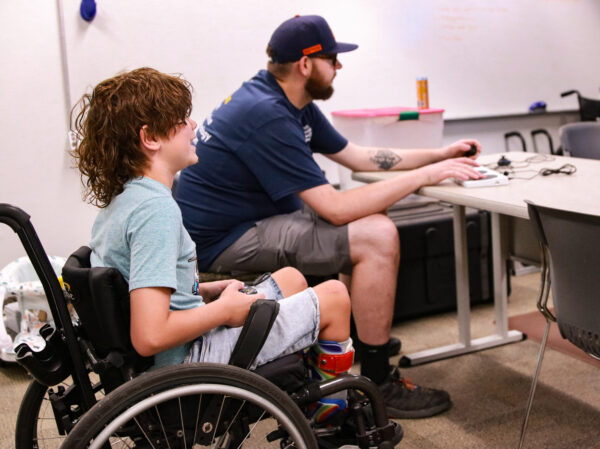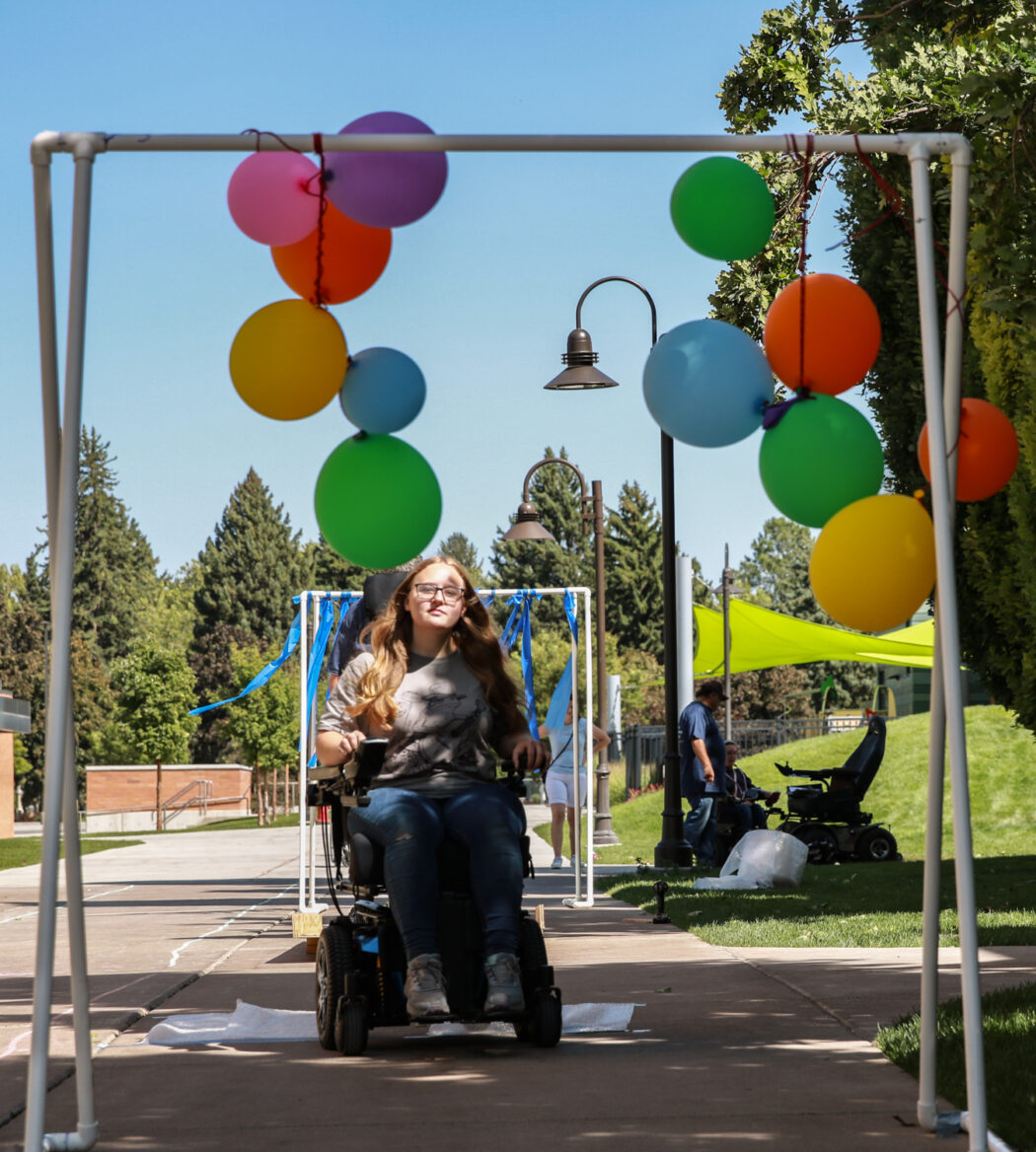The Utah Assistive Technology Program celebrates 35 years of accessibility
The Utah Assistive Technology Program marked 35 years of providing assistive technology to the Logan community and throughout the state with a day of assistive gaming, demonstrations and obstacle courses on Aug. 24.
The fair showcased different types of assistive technology including a wheelchair obstacle course to help attendees gain perspective into the lives of those with limited mobility.
Bora Lee is the program coordinator for UATP and has been with the program for six years.
“We have different wheelchair obstacle courses,” Lee said. “If you don’t have the same experience, it’s hard to understand the other perspective. We want to build that empathy and understanding of people who use these devices.”
At the beginning of each month, the program puts on demos for different assistive devices, like the frame runner or lever control baby walkers.
“A frame runner is a three-wheeled trike without the pedal,” Lee said. “You are leaning against the chest plate and using your feet to propel. We have 10 of these that were loaned out to school districts so kids can be included in adaptive P.E.”
The program services those unable to access or afford assistive technology by loaning out equipment or selling it at an affordable price point. The program also offers free training for parents or users obtaining new assistive technology.
The program has three different locations throughout Utah: Logan, Vernal and Salt Lake. A newly proposed branch of the program will be entirely mobile.
“The fourth will be more of a travel van that will travel throughout parts of Utah where they don’t have the same access as we do,” Lee said.
Melinda Thornton is the outreach coordinator for UATP.

Outreach and assistive technology technician, Kenner Mecham, uses an adaptive gaming controller to play a video game with one of the attendees of the 35th anniversary celebratory fair for the Utah Assistive Technology Program.
“We help with all stages of life, from birth to death,” Thornton said.
The program helps those whose insurance might not cover the cost of an assistive device, whether it be from disability, age related issues, injury or health condition. According to medicare.gov, those looking for power wheelchairs covered by insurance must meet specific criteria to do so.
“Seven out of 10 people do not qualify for assistive technology under their insurance,” Thornton said. “If you can walk around your house with a walker or with a cane, but you can’t go down the stairs or anywhere else, you still don’t qualify.”
The program can provide affordable assistive devices via donations and repurposing that takes place in the UATP workshop.
“People donate their chairs and we tear them down and only keep what’s good,” Thornton said. “When somebody comes in and they need a chair, we take their order and their measurements, and we build them that chair.”
Powered wheelchairs from UATP are priced around $250 plus the cost of the battery. According to bestpowerwheelchair.com, the average cost of a powered wheelchair ranges from $1,300 to $3,500.
“We do have grants for low income families — up to $500, which makes them virtually penniless,” Thornton said. “My chair, with the additions, was roughly $40,000, so you’re getting a $40,000 chair for $700.”
The program runs largely on the help of volunteers, who can get involved by contacting their respective offices and setting up an appointment.
“We are always looking for more volunteers, not only in Logan but also in Salt Lake and Vernal,” Lee said.
Volunteers can get involved with designing and producing new types of assistive technology and discovering new ways to improve independence for those with disabilities.
“We want to engage students in creating new designs if they have any,” Lee said. “Our lab coordinator here — he had a vision, and now he’s working on creating an exoskeleton that is more affordable.”
According to exoskeletonreport.com, assistive technology like exoskeletons can cost upwards of $100,000. Other kinds of technology, like powered wheelchairs and braille devices can cost anywhere from $5,000 to $10,000 without insurance.
Apart from getting people the assistive devices they need, UATP also hopes to involve the greater community in creating a more accessible campus and gain insight into the experiences of people who utilize assistive devices.
“Campus may not be as accessible as we hope, but we’re trying our best,” Lee said. “It should be a community effort. It should be all of us acknowledging accessibility.”
Students can be a part of this effort by volunteering or working with UATP to focus capstone projects around creating new assistive technology. Lee also urges students to take on a disability studies minor as a unique opportunity to gain further insight into the lives of students with a disability and improve accessibility for those students on campus.
“25 % of the world is handicapped in one way or another,” Thornton said. “It’s important to have something that is just ours — this is our fair. The program needs to be here because there are so many that need our help.”

